I have discovered that the small flowers and fine leaves of species iris mix with my other garden perennials better than do the flamboyant blooms and coarse foliage of the well-known bearded irises. But I especially love the various species, or “wild,” irises for their ability to extend the two- to three-week blooming period of bearded irises.
Species irises are far more accepting of less-than-ideal growing conditions than the sometimes cranky hybrids are. Depending on the species, their cultural requirements are so varied that you can find one for nearly every garden situation—not just the full sun and excellent drainage demanded by bearded hybrids. They have the added advantage of being relatively free of such destructive bearded-iris pests as rhizome borer and fungal leaf spot, and are readily available.
Species Iris
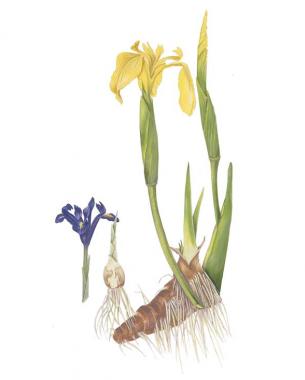
Photo/Illustration: Rosalind L. Wanke
• Flowering perennials 4 inches to 6 feet tall, in spreading clumps of bulbs or rhizomes
• Green or variegated, straplike foliage. White, blue, yellow or red flowers, sometimes fragrant
• Grow from USDA Hardiness Zones 5 to 8
• Pest and disease resistant
• Grow in borders, along pond margins or as ground covers
• Propagate by seed or division. Provide abundant moisture, full sun or partial shade depending on species
Spring bloomers

Photo/Illustration: Susan Roth
Iris reticulata: Fragrant, purple flowers that precede spring
The iris season begins in late February in my garden here in central Virginia, when I. reticulata blooms. This species’ grasslike foliage usually tops, but never obscures, its purple, grape-scented blossoms. The flowers of this miniature iris are nearly 2 inches in diameter and rarely stand more than 4 inches high.
The inexpensive and easily propagated bulbs are hardy at least to USDA Hardiness Zone 4, although they often don’t persist where summers are hot and wet, as they are here in Virginia. To ensure flowering, I treat I. reticulata as an annual, planting new bulbs each year. After flowering, I allow the foliage to mature, and some survive to bloom again the following year.
Plant the bulbs in late fall. Select a sunny location with fairly light soil, and set the little bulbs, which are about 112 inches in circumference, 4 inches deep. Shallower planting would encourage the bulbs to break up into many bulblets, which makes them less persistent.
The vibrant purple flowers of I. reticulata stand out when interplanted with yellow-flowered crocuses.
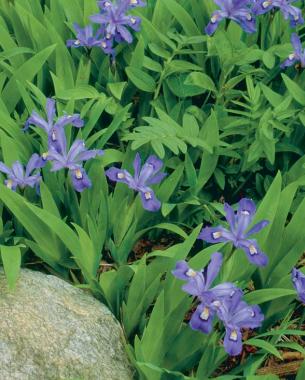
Photo/Illustration: Susan Roth
Iris cristata: A ground-hugging carpet of blue flowers
In spring, a North American native, I. cristata, forms a thick mat on the forest floor in much of the eastern United States. This hardy iris (to Zone 4) is commonly called dwarf crested iris. It follows the early-rising I. reticulata, blooming from April 1 to mid April in my garden. The flowers open flat like those of the giant Japanese iris (I. kaempferi), but as its name implies, the 1 1/2-inch-diameter flowers of dwarf crested iris are 8 inches tall, rising above the graceful, 4-inch-tall, light green fans of leaves. A few selections, flowering in white or shades of blue to violet, are available.
Dwarf crested irises do well growing in the shade of tall trees. The more sun they receive the more they bloom, but I have patches of them that bloom well in deep shade.
This versatile species can be interplanted with shade-loving plants, such as azaleas and rhododendrons, or it can carpet sunny slopes beautifully. In a woodland garden, scatter clumps of native yellow-flowered celandine poppy (Stylophorum diphyllum) and white-flowered bloodroot (Sanguinaria canadensis) among dwarf crested irises.
The best way to transplant dwarf crested iris is to move “sods” (clumps wide enough to include at least three “fans,” or individual plants) with soil and mulch about 4 inches deep attached to the rhizomes. But if carefully watered in, individual rhizomes can be established just after blooming (a time when the plants put out new roots). Plant dwarf crested iris in a soil that is rich in humus—preferably leaf mold.
Moisture lovers
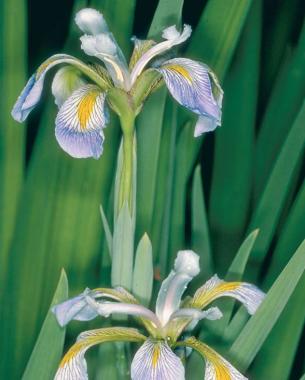
Photo/Illustration: William A. Shear
The following species irises grow best at water’s edge, but they can also grow in a perennial border with a little extra attention to watering. All are hardy at least to Zone 5, and they do best in rich, heavy, moisture-retentive soil. These species are best established when planted in groups of three to five fans. Divide and transplant them in early spring or fall, keeping the roots moist.
Iris virginica and I. versicolor: Natives well adapted to the South
Known as Southern blue flag, I. virginica thrives in Southern gardens. Some selections have the distinction of being the largest of any irises. When grown in shallow water, the leaves alone can top 6 feet. The flowers, which are up to 4 inches in diameter, are beautifully formed and appear late in the bearded-iris season (around the first of May in my garden). Selections are available with lavender-pink or white flowers, and there are also double-flowered forms. I. virginica and a smaller relative, I. versicolor—which generally grows less than 2 feet tall with flowers about the same size and appearing at the same time as those of I. virginica—share the common name of blue flag.
The flowers of I. versicolor embrace all shades of blue, reddish violet and purple; there are also white and bicolor versions.
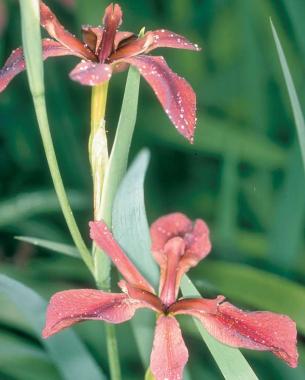
Photo/Illustration: William A. Shear
Iris fulva: Unique among irises for its flowers in shades of red
Ranging from Illinois south to the Gulf Coast is the native I. fulva, commonly called the copper iris. Surprisingly, this species is hardy far north of its natural range, having been successfully grown in North Dakota (Zone 3).
Copper iris is the only reddish-flowered species iris. Red-, orange-, copper- and yellow-flowered selections are available in addition to the typical brick-red form. The 2-foot-tall flower stems of copper iris are well branched, and the 4-inch-diameter flowers stand just above the straplike foliage.
Mulch this species heavily if you grow it away from a pond margin, because rhizomes growing at the soil’s surface can rot if they become sunburned.
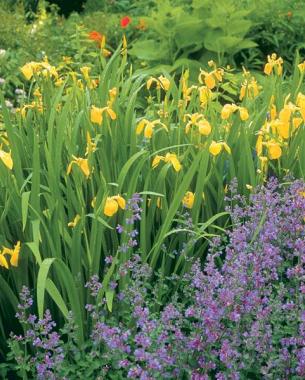
Photo/Illustration: Charles Mann
Iris pseudacorus: Its bright yellow flowers command attention
Naturalized plants of the hardy (Zone 4) European yellow flag (I. pseudacorus), can be seen growing in wet places from maritime Canada southward. This giant rivals I. virginica in size, with leaves reaching up to 5 feet tall. The flowers, which appear in early summer, are bright yellow—up to 4 inches across—with distinctive brown markings on the throat. This species, which blooms at the end of the bearded-iris season, has many selections, some with white or pale yellow flowers. There are also unmarked forms and a double-flowered form with tightly wadded petals, known as falls, which I find particularly unattractive. There is a selection with yellow-variegated foliage also. The variegation persists for a short time in spring, however, and the leaves revert to solid green later in the season. I. pseudacorus is a parent of interspecies hybrids such as ‘Holden Clough’, which has yellow flowers with striking purple veins.
These wetland species irises all enjoy similar growing conditions. They look fantastic when planted together as companions, but I prefer to combine them with large-leaved plants, such as giant butterbur (Petasites japonicus var. giganteus), for contrast.
Note: According to the USDA, this plant may become
weedy or invasive in some regions or habitat. Learn more by contacting your local extension or visiting http://www.invasiveplantatlas.org/distribution.html

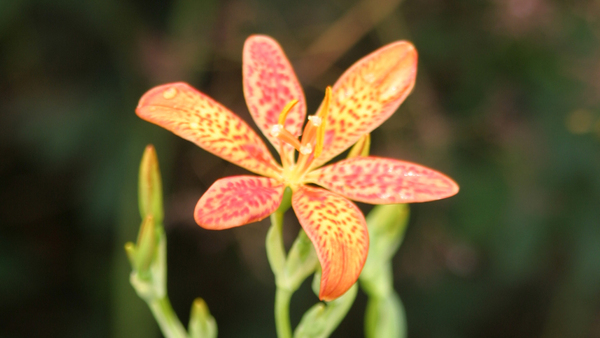

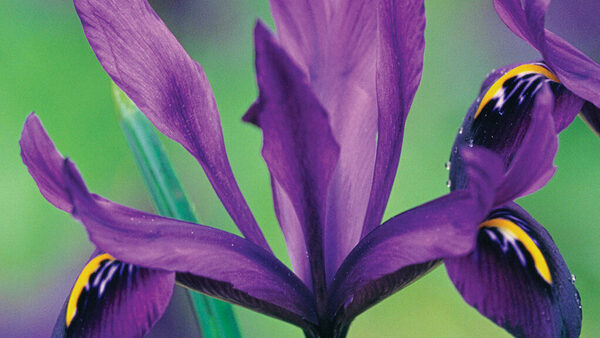
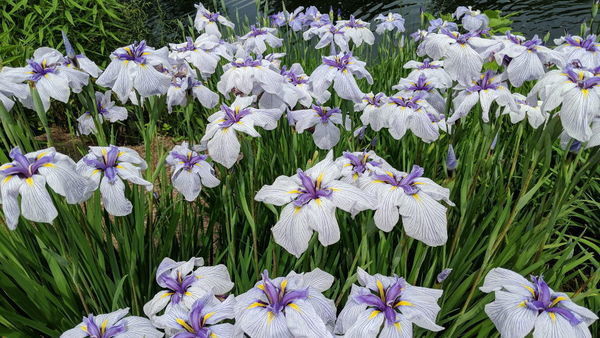












Comments
I use Irises as exclamation points when I design a garden, particularly Iris ensata variegata, or Variegated Japanese Iris. Even after the origami-like flowers have faded, the green-and-cream foliage adds great interest to the garden. They look smashing with Sedum or Thread-leaf Coreopsis for contrast.
Love the idea of I. pseudoacorus growing alongside Petasites!
These irises can be invasive. Here on Vancouver Island I have seen lakes choked by thousands of plants.
Log in or create an account to post a comment.
Sign up Log in